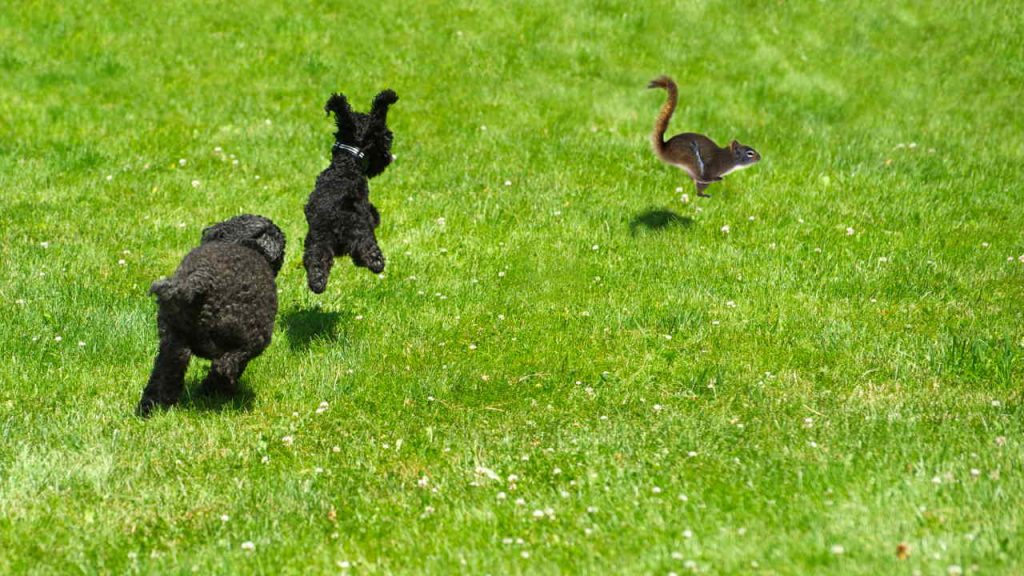Introduction
Many loving dog parents are switching from store-bought food to home-cooked meals for their pets to eat due to the rising frequency of pet food recalls. It could seem overwhelming if you’ve never done this before. You probably know what to cook for your family and yourself, but you might not know what to give your furry baby to eat. We are frequently told not to give homemade food for our pets to eat.
So, what then do we provide for them? In reality, most human foods are alright edible for dogs. The distinction is that food we cook for ourselves regularly contains ingredients that are toxic when they eat or are too fatty or rich for their digestive processes. It’s beneficial to create food for their systems using nutritious foods.

You might think that preparing food for your dog would essentially involve protein. However, dogs require a healthy balance of protein, carbs, and vegetables like humans do. While it can differ amongst dogs, maintaining a balance between these factors is crucial. The ratio of 40% protein to 50% vegetables to 10% starch is a healthy one. However, some dogs cannot tolerate large amounts of protein. Therefore it’s better to consult your veterinarian to find the proper ratio for their dietary requirements.
When you start your journey of cooking homemade recipes for your furry friend to eat, you will eventually encounter banana peels. Almost all dogs love eating a banana. The numerous health advantages of bananas might also benefit your dog. Bananas are a fantastic source of potassium, vitamin B6, vitamin C, and fiber. Each day, your canine needs to eat 20 milligrams of potassium.

Potassium supports bone health, brain health, and muscle growth. Illnesses like vomiting and diarrhea may deplete your pup’s potassium reserves, and more potassium may aid in a quicker recovery. The healthy vitamin B6 helps the proper potassium-sodium balances in your dog. Antioxidant vitamin C can lessen inflammation. In addition to assisting in the digestion of what they eat, fiber can control your dog’s weight.
Everything tastes excellent in moderation, but eating too many bananas may upset your furry baby’s stomach, so avoid reaching for the fruit bowl too frequently. But what about the banana peels? Banana peels have various advantages. They have antioxidants, carotenoids, and polyphenols that aid in the detoxification process. Banana peels are highly nutritional for humans.
They aid teeth whitening and treat acne, wrinkles, discomfort, and psoriasis. Antioxidants and trace levels of vitamin C are found in banana peels, which may help your skin seem more youthful. You can also make banana peel powder to use in your skincare routine. To make homemade banana peel powder, the banana peels should be cut into small pieces and dried in the sun. Banana peel powder can also be made by drying banana peels in the oven and grinding them. So let’s live deep into this superfood and find out, can dogs eat banana peels too?
Are banana peels toxic to dogs?

If your dog craves bananas like crazy, it won’t take long for him to decide to eat the entire banana, including the peel. Peels are not harmful but can lead to various health issues, such as an intestinal blockage. If given in moderation, the fruit provides certain health benefits for your furry baby and is not poisonous to canines. This implies that while they are a tasty treat, the peels must be avoided.
There are several myths about the possible advantages of banana peels, but you shouldn’t give them to your pup. Some claim that applying a banana peel to a wart would remove it, while others assert that leaving a peel on the floor will eliminate fleas. Keep in mind that none of these suggestions involve giving your puppy peels. Peels are not poisonous to canines, like apple cores, but they are difficult to digest.

This is due to the high concentration of fiber they have. Banana’s outer skin has the potential to make people throw up and possibly clog their intestines. Thankfully, it is uncommon, but the danger is not worth it! Severe blockages in the intestines or stomach would necessitate immediate surgery. With small breeds and pups who prefer to swallow their food rather than chew it, you should exercise particular caution. These puppies might be more prone to obstructions. When giving a banana to your furry child, always peel it first.
The taste of banana peeling is another reason to avoid them. There is no need to give your furry friend the peel because even monkeys usually peel bananas, and you would peel your own anyhow. However, even with the best of intentions, your dog might succeed in ingesting a banana peel because, as we all know, some of our canine friends are excellent scavengers. Bananas should be kept out of your dog’s reach as much as possible.
What should I do if my dog eats a banana peel?

Despite your best attempts, if your furry baby manages to consume a banana peel or an entire banana, contact your veterinarian right away. Before doing anything else, you should start with this. They’ll probably request that you keep your dog at home and watch them for illness. Call your vet right once if you detect any illness-related or stomach-related symptoms. Take a picture of the peel if they vomit it up, and show your veterinarian if they do.
Due to the fiber content’s “shocking” effect on the system, some mild vomiting or diarrhea may happen. However, more severe signs of a blockage in the digestive tract include vomiting, diarrhea, straining to urinate, lethargy or stomach ache. You should call your veterinarian immediately if your pet exhibits any of these symptoms or if you have any additional questions. Time is of the essence if you begin to experience signs of an intestinal blockage brought on by a peel.

After your initial call, if your veterinarian has any concerns, you’ll probably need to bring your puppy in to be checked. They will do a clinical assessment and examine the consumed peel’s risk. When speaking with your veterinarian, you’ll need to know precisely how much was eaten or as near to it as possible. Your veterinarian will decide the next course of action. Here are some of the possibilities:
- Your vet will probably order specific testing if they have any worries. An X-ray will likely be performed to determine the location of the banana peel your furry baby eat and the likelihood of a blockage. They might also use a minimally invasive ultrasound to scan the organs in your pup. In more critical situations, an endoscopy might also be carried out. A long, flexible camera is now placed into your dog’s stomach to locate the foreign unwanted banana peel.
- Another option might be inducing vomit. It’s crucial to remember that dog owners shouldn’t try to cause vomiting at home. Only a licensed veterinarian should perform this. You risk further harm by forcing the vomiting yourself when the peel travels back up your dog’s esophageal tube. By bringing the peel back up, you risk choking your pup. This decision should be left to your veterinarian, who should then take the appropriate action.
- The next step is surgical removal if the peel has entered the small intestine but isn’t yet adhered. Your veterinarian can evaluate any more damage or obstruction and remove the banana peel during the procedure. The type of damage or potential blockage will determine whether surgical removal is successful. A full recovery is typically quite likely if discovered early.
- Depending on your vet’s course, your dog might be kept overnight or for a few days. As a result, the veterinary staff can keep a close eye on them and respond appropriately if your canine’s condition worsens. The veterinary experts will check for dehydration if your puppy vomits too much liquid.
Conclusion

Many pet owners come face to face with this dreadful question: can dogs eat banana peels? In theory, an intestinal blockage caused by a peel may have dire consequences. The skins of bananas are not suitable for dogs to eat and should not be given to them. However, the fruit itself is a safe treat for them. An intestinal blockage is the most likely scenario in which a banana’s skin could be lethal.
Although allergic reactions to most tropical fruits in canines are uncommon, there is a chance that they could cause a severe allergic reaction that is potentially fatal. The size of the peel will determine how much harm it can cause to your dog’s stomach. Large breed pups are far more likely to pass massive peels than small breed dogs, who are more likely to have digestive blockages.
Sharing bananas with your dog can be a tasty and harmless activity. To give your dog a banana, though, always peel it first. You can always think about giving your dog other fruits that are well recognized to be safe if you want to be extra cautious. Kiwi, papaya, and even blueberries are examples of safe fruits. Peels are challenging to digest and can harm your dog’s digestive system even if they are not harmful. Bananas should always be kept out of curious noses’ reach.




